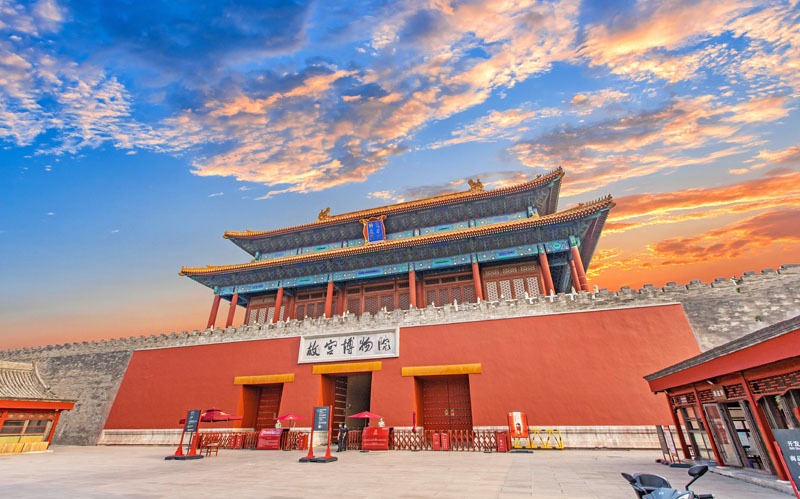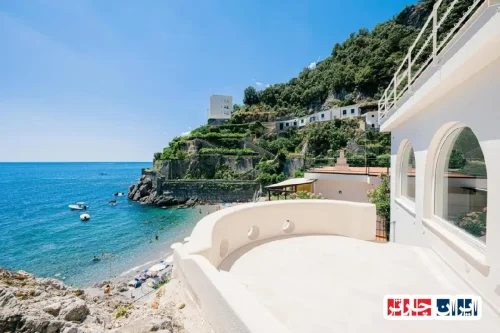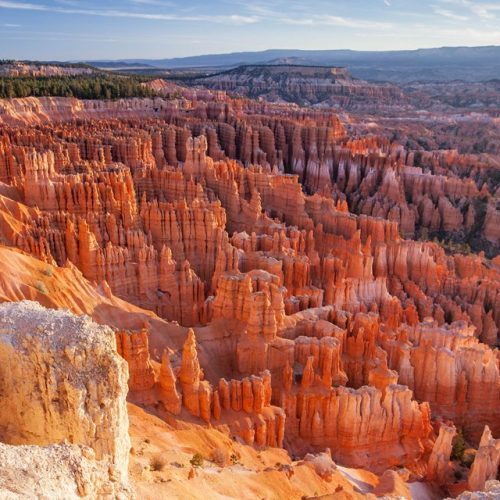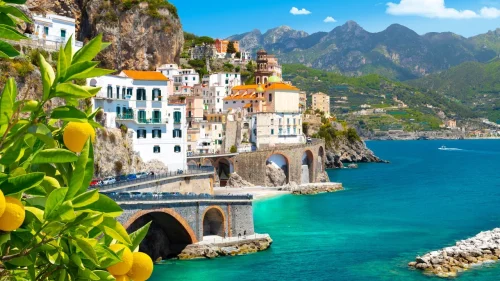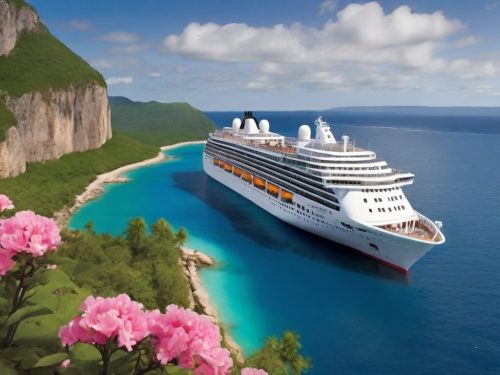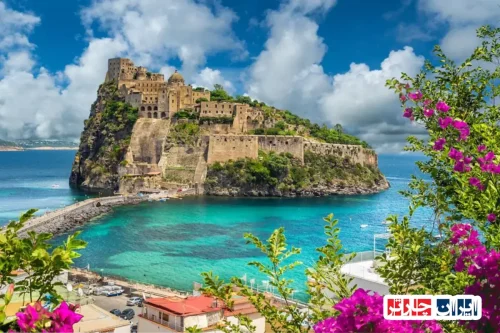The Forbidden City in Beijing, China
The Forbidden City in Beijing, China, is one of the largest and most significant historical and cultural landmarks in the world. This vast complex of imperial palaces and gardens is recognized as the heart of Chinese civilization and offers a unique experience of history and architecture. Located in central Beijing, it attracts millions of visitors annually as a prominent tourist attraction. Not only was it the residence of the Ming and Qing dynasty emperors, but it also witnessed significant historical events. Walking through its corridors, you can travel back to the era of past empires and enjoy the beauty of traditional Chinese architecture. With its orderly design and symbolic colors, it represents the power and grandeur of the Chinese emperors. Furthermore, its beautiful gardens and expansive courtyards provide a serene environment for relaxation and reflection. Visiting this historic site offers a deeper understanding of China’s culture, art, and history.
The Forbidden City is not only a tourist destination but a cultural treasure that must be preserved for future generations. By visiting its diverse exhibits and exploring its vast array of artistic and historical artifacts, you can delve into the depths of the history of this massive complex. The experience of visiting the Forbidden City is a reminder of China’s golden age and its remarkable achievements in art and architecture.
Where is it?
The Forbidden City in the heart of Beijing, the capital of China, is not only one of the most significant historical and cultural attractions of this city but is also recognized as a symbol of the grandeur and glory of Chinese empires. This vast complex, located at the heart of Beijing, with its magnificent architecture and majesty, holds centuries of history. Among the reasons for its popularity are the display of unparalleled art and architecture of its time, the fascinating exhibition of artworks and ancient objects, and its calm and inspiring atmosphere.
Geographical Location of the Forbidden City
The Forbidden City is located in the northwest of Beijing, in the historical center of the city. This complex is surrounded by a massive wall made of stone and bricks, constructed during the Ming dynasty, designed to protect the empire and prevent unauthorized entry. The geographical position of the Forbidden City is meticulously designed to offer visitors a serene and inspiring atmosphere. Additionally, this site aligns along a strong axis with Tiananmen Square, reflecting the philosophical and military beliefs of Chinese empires.
Distance from the Forbidden City to the Center of Beijing
The Forbidden City is only a few kilometers away from the center of Beijing. Accessing the site is very easy via Beijing’s public transportation system, particularly the metro and bus. To reach the site, you can use the main metro stations in Beijing and directly get to the nearest station to the Forbidden City. Also, taxis and personal transportation services like car-tracking apps are suitable options for quick and convenient access to the Forbidden City, especially for those who prefer not to hassle with public transport.
Introduction to the Forbidden City
The Forbidden City, also known as the Great Palace Complex, is an outstanding example of Chinese architecture and art. Its construction took place during the Ming and Qing dynasties and served as the center of the Chinese imperial government for nearly 500 years. The cultural and historical significance of the Forbidden City is highly regarded due to its role in shaping China’s history and laying the foundations of Chinese civilization. This place was not only the residence of emperors but also a site for official ceremonies and important governmental decisions.
Structure and Architecture of the Forbidden City
The architecture of the Forbidden City is meticulously planned and features symmetrical and balanced principles. This complex comprises over 900 buildings, each playing a specific role in the overall structure. The main buildings are located along the main axis, symbolizing centrality and power. The use of wood and stone in building constructions, with detailed features and numerous embellishments, showcases Chinese architectural art and craft.
Best Time to Visit the Forbidden City
The best times to visit the Forbidden City are spring and fall, when the weather is mild and pleasant. In these seasons, the surrounding gardens are adorned with spring blossoms and beautiful autumn colors, enhancing the visiting experience. Warm regions like summer are also suitable for visits, but attention should be paid to potential crowds and high temperatures. In winter, despite the intense cold, the Forbidden City presents a unique and different appearance that may appeal to some tourists.
The Historical Cycle of the Forbidden City
Throughout China’s history, the Forbidden City has witnessed numerous changes. From its construction during the Ming dynasty to the end of the Qing dynasty’s rule, this complex played a central role in imperial governance and politics. With China’s revolution and the abolition of the imperial government, the Forbidden City was transformed into a palace museum, taking on a new role in preserving and showcasing Chinese history. Continuous efforts to preserve and restore the Forbidden City highlight its importance in conserving China’s cultural and historical heritage and play a crucial role in educating and raising awareness among future generations.
Internal Attractions of the Forbidden City
The Forbidden City comprises a collection of halls, gardens, and temples, each with special significance. The Hall of Supreme Harmony, the largest wooden building in China, is a venue for the emperor’s official ceremonies. The imperial garden, with ancient trees and beautiful designs, offers visitors a relaxing place. Various temples within the city, such as the Ancestral Worship Temple, reflect the spiritual and cultural significance of this historical site.
Customs and Traditions in the Forbidden City
Life in the Forbidden City was subject to strict rules and customs. Today’s visitors can better understand the emperors’ lifestyle and their court through precise reconstructions. Daily customs involved official ceremonies, celebrations, and cultural programs that helped maintain order and respect among residents. Each emperor and empress played a central role in executing these ceremonies.
Important Tips for Visitors
For a better visit to the Forbidden City, it is recommended that visitors plan their time sufficiently and pay attention to important tips such as wearing appropriate clothing and comfortable shoes. This vast site, covered with historical discoveries, requires time for exploration. Using audio guides or guided tours can help in better understanding the history and architecture of the Forbidden City. Also, it’s suggested that visitors reserve their tickets in advance and choose less crowded hours for their tour.
Photography and Tourist Experience

With its amazing architecture and detailed features, the Forbidden City offers a unique location for photography. Visitors can capture stunning photos of large halls, historical buildings, and beautiful gardens. The best time for photography is early morning or sunset when the soft sunlight gives a special effect to the images. The tourist experience in the Forbidden City includes visiting museum exhibitions, participating in educational tours, and engaging in cultural activities that acquaint every visitor with China’s rich history and culture.
How to Get to the Forbidden City?
Access to the Forbidden City is very easy using Beijing’s public transportation system. The metro is one of the fastest and most economical ways to reach this historical site and is a popular option for tourists. The metro stations near the Forbidden City include lines 1 and 2, which are conveniently connected to Tiananmen Square. Additionally, taxis and personal transport services offer suitable options for quick and convenient access to the Forbidden City.
FAQ
- Where is the Forbidden City located?
- The Forbidden City is located in the center of Beijing, the capital of China, and is part of the UNESCO World Heritage Site.
- What is the exact geographical location of the Forbidden City?
- The Forbidden City is situated to the northwest of the Imperial Palace Watchtower in China and is enclosed towards the south by Tiananmen Square.
- How far is the Forbidden City from the center of Beijing?
- The Forbidden City is approximately 2 kilometers from the center of Beijing and is easily accessible via public transportation.
- What is the history and cultural significance of the Forbidden City?
- The Forbidden City served as the residence of Chinese emperors from 1450 to 1949 and is of high cultural significance due to its unique architecture and long history.
- What is the structure and architecture of the Forbidden City like?
- The Forbidden City features religious and imperial architecture with large halls, vast courtyards, and intricate artistic details representing Chinese art and culture.
- When is the best time to visit the Forbidden City?
- The best time to visit the Forbidden City is during the spring and fall when the weather is mild and conducive to tourism.
- During which historical eras was the Forbidden City influential?
- The Forbidden City primarily played a role during the Ming and Qing dynasties as the residence of Chinese emperors, and its influences were evident throughout these periods.
- What are the main internal attractions of the Forbidden City?
- Main attractions include the Imperial Library Hall, the Great Hall, Royal Gardens, and beautiful gates.
- What customs and traditions were associated with life in the Forbidden City?
- Life in the Forbidden City adhered to strict social hierarchies, imperial laws, and religious ceremonies, reflecting the order and structure of Imperial China.
- What important tips should visitors keep in mind?
- Visitors should respect the site’s rules, remove their shoes in some areas, and uphold proper behaviors in historical sites.
- Where are the best spots for photography in the Forbidden City?
- Key spots include the Great Hall, the Royal Garden, and the views around the gates, capturing scenic and historical vistas.
- How can one access the Forbidden City?
- The Forbidden City is easily accessible via Beijing Metro, buses, and public taxis with clearly marked routes for visitors.
- What role did the Forbidden City play in China’s history?
- The Forbidden City, as the center of Chinese imperial power, played a key role in shaping and preserving China’s culture, politics, and art over centuries.
- What ceremonies were held in the Forbidden City?
- Ceremonies like New Year’s celebrations, purifying rites, and emperors’ coronations were held in the Forbidden City.
- How much does it cost to visit the Forbidden City?
- The entrance fee to the Forbidden City varies by season and ticket type, usually ranging from 50 to 80 Chinese Yuan for adults.
- Are tour guides available in the Forbidden City?
- Yes, professional tour guides are available in various languages to enrich the visiting experience.
- Is there a possibility to visit the Forbidden City at night?
- Visiting the Forbidden City at night is generally not allowed, but may open to the public on certain occasions and festivals for a limited time. For precise information, it is better to check the Forbidden City’s official website or Beijing Tourism Organization.
- Is a permit or visa required to visit the Forbidden City?
- There is no separate permit needed to visit the Forbidden City, but a visa is required to enter China. For more information about visa conditions, you can consult the Chinese embassy or consulate in your country.
- Are there facilities like restaurants, shops, or restrooms available in the Forbidden City?
- Yes, facilities such as restaurants, souvenir shops, and restrooms are available for visitors within the Forbidden City premises.
- Is it possible to travel to the Forbidden City with Iran Charter tours?
- Iran Charter offers tours to China, including the Forbidden City. For information about the programs and tour details, you can contact them at 02191091190 or send an inquiry to info@irancharter.ir.
- Is it possible to hold special ceremonies and events in the Forbidden City?
- Yes, the Forbidden City hosts special ceremonies and events on certain occasions and festivals. For more information, you can check the Forbidden City’s official website.
- Is it possible to give gifts to officials and staff of the Forbidden City?
- Giving gifts to officials and staff of the Forbidden City is prohibited. It is best to review the rules and regulations concerning gifts before your visit on the Forbidden City’s official website or Beijing Tourism Organization.
- Is it possible to hire a tour guide in Persian language at the Forbidden City?
- It is possible to hire a tour guide in Persian language at the Forbidden City. For information on Persian-speaking guides, you may contact travel agencies and tours in Beijing or gather information from tourism websites.
- How many days are needed to visit the Forbidden City?
- One day is sufficient for a complete visit to the Forbidden City. However, if you are interested in learning more about the history and architecture of the Forbidden City, you may need two or three days.
- Is it possible to stay within the Forbidden City premises?
- Staying within the Forbidden City premises is not possible. However, there are many hotels and guesthouses available near the Forbidden City.

